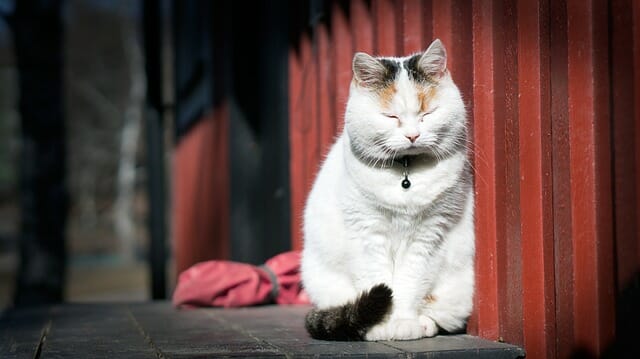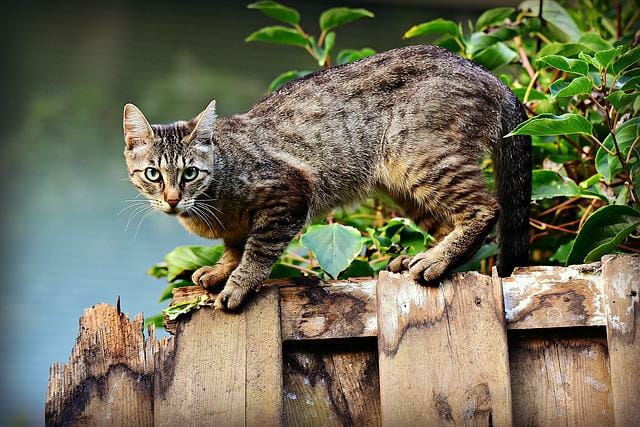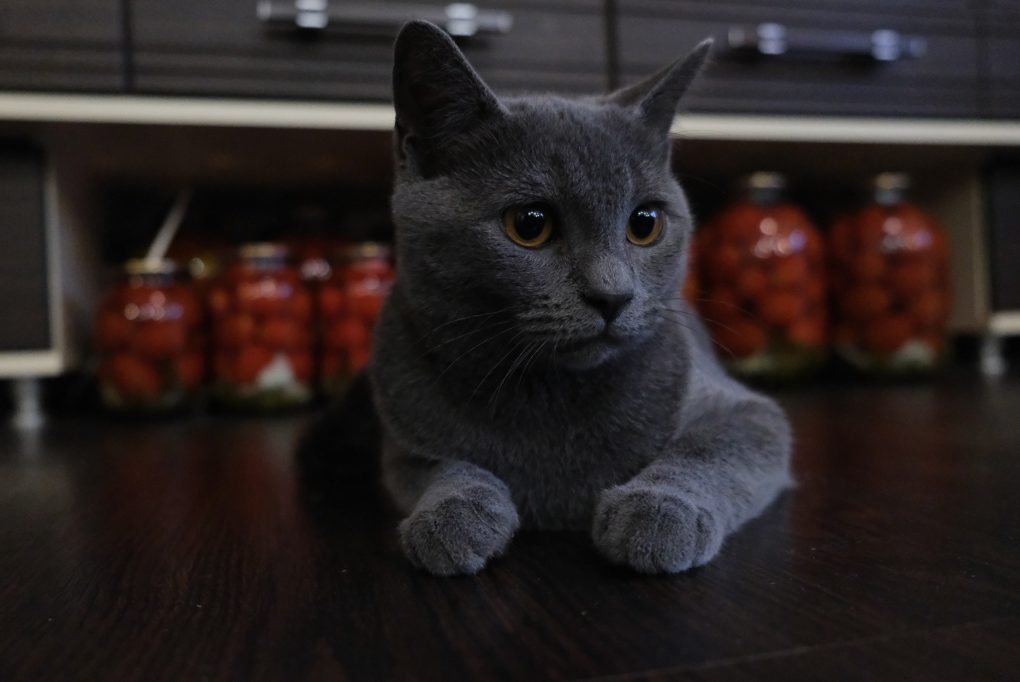Why Are Cats Scared of Cucumbers: Reasons Cats Are Scared of Cucumbers and Ways to Deal With Their Fear
There is no clear scientific explanation for why some cats fear cucumbers, but the shape and color of cucumbers may resemble snakes, a natural predator of cats. This may trigger a fear response in some cats, and when a cucumber is placed behind a cat without their knowledge, the sudden appearance of the cucumber may also startle the cat, causing them to react with fear.
Cats may also have negative associations with cucumbers if they have had negative experiences. It’s important to note that while videos of cats being scared by cucumbers may seem amusing, it’s not recommended to intentionally scare or startle your cat, as it can be stressful and harmful to their well-being.


Table of Contents
Reasons Cats Are Scared of Cucumbers
Surprise Factor
Cats are naturally curious animals and are often drawn to investigate new objects in their environment. For example, when a cat turns around or enters a room and sees a cucumber unexpectedly placed behind them, it may be startled and frightened by the sudden appearance of the object.
This surprise factor can trigger the cat’s instinctual fight-or-flight response, causing them to jump, hiss, or run away from the cucumber. The cat may perceive the cucumber as a potential threat, and their fear response may be heightened by the unexpected nature of the cucumber’s appearance.
Resemblance to Predators
Some experts suggest that cats may fear cucumbers due to their resemblance to predators, specifically snakes. Cats have an instinctual fear of snakes, which are natural predators of small animals like cats in the wild.
Cucumbers have a similar shape, size, and color to snakes, with a long, slender body and a green or yellowish color. When a cat sees a cucumber placed behind them, their brain may perceive it as a potential predator and trigger its fear response.
This fear response is an evolutionary adaptation that has helped cats survive in the wild by alerting them to potential dangers and helping them to avoid predators. However, this fear response is unnecessary for cucumbers, as they are not predators and do not threaten cats.
Negative Association
As mentioned, cats can develop negative associations with certain objects, including cucumbers, if they have had negative experiences with them. For example, if a cat has been scared by a cucumber before, it may become fearful or anxious when they see one in the future.
The cat’s memory and ability to associate a particular object with a negative experience can reinforce this negative association. For example, the cat may start associating the appearance of cucumbers with the fear or stress they experienced in the past, and their fear response may be triggered even if there is no actual threat present.


Additionally, if a cat has had negative experiences or has a history of anxiety, it may be more likely to develop negative associations with objects like cucumbers. In these cases, the fear response may not be specifically related to the cucumber itself but to the overall feeling of anxiety or stress.
How to Deal With Cats Scared of Cucumbers
Avoid Intentionally Scaring Your Cat
Intentionally scaring a cat with a cucumber when they fear it is not recommended and can harm their physical and emotional well-being. The easiest way to avoid scaring your cat intentionally is to avoid using cucumbers around them. If your cat fears cucumbers or any other object, removing that object from its environment is best to avoid triggering its fear response.
If your cat has a fear of cucumbers, it may also have a fear of other objects or situations. Be aware of your cat’s triggers and avoid situations that may cause them stress or anxiety. For example, if your cat is scared of loud noises, avoiding using a vacuum cleaner or other noisy appliances around them is best.
Instead of intentionally scaring your cat, provide it with a safe space to retreat when they feel scared or anxious. This could be a quiet room with a comfortable bed, a hiding spot, or a tight space where your cat feels secure.
If your cat’s fear of cucumbers or any other object is severe or persistent, seeking professional help from a veterinarian or animal behaviorist may be helpful. They can help you identify the underlying cause of your cat’s fear and develop a customized plan to help your cat overcome their fear and anxiety.
Create Positive Associations
Creating positive associations is a technique used to help cats overcome their fear of cucumbers or any other object. Begin by introducing the cucumber at a distance and gradually bringing it closer to your cat over time.
Start with small steps, like placing the cucumber on the other side of the room while your cat eats their food or plays with their favorite toy. Once your cat becomes more comfortable, you can move the cucumber closer and closer to them.


When your cat approaches the cucumber without fear or anxiety, offer them a treat or praise. This will help create a positive association between the cucumber and a reward. Use high-value treats that your cat loves, like small pieces of chicken or tuna, to reinforce positive behavior.
Playing with your cat near the cucumber can help them associate the object with positive experiences. Use toys your cat enjoys, like feathers or string, and play with them while the cucumber is nearby. This will help your cat see the cucumber as another object in their environment.
As your cat becomes more comfortable with the cucumber, gradually increase their time around it. Continue to offer treats and praise for calm behavior and positive interactions with the cucumber. This will help your cat build confidence and overcome their fear.
Creating positive associations takes time and patience. Be consistent with your training, and don’t rush the process. For example, if your cat becomes fearful or anxious, step back and start again at a lower exposure level. With time and persistence, your cat can overcome their fear of cucumbers and learn to see them as just another object in their environment.
